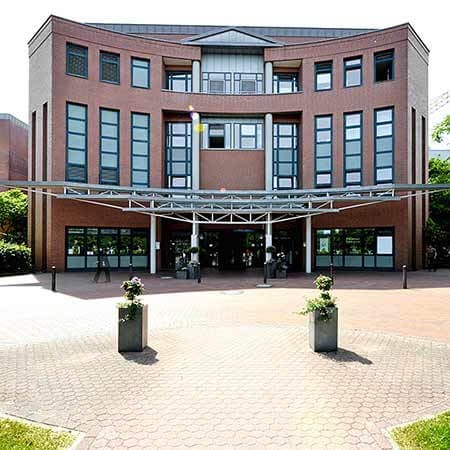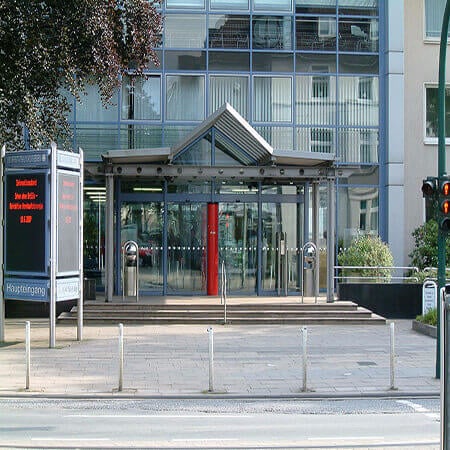Tetralogy of Fallot is a congenital heart disease that affects 1 out of 3,000 newborns. The pathology is characterized by a narrowing of the area of transition of the right ventricle to the pulmonary artery, ventricular septal defect, aortic dextroposition and right ventricular hypertrophy. The last element of congenital heart disease develops as a secondary pathological condition due to the increased load on the corresponding heart chamber. Doctors in the developed European countries successfully treat the patients with tetralogy of Fallot by performing a single surgical intervention.
Content
- Causes
- Radical correction
- Palliative surgery
- Long-term results and additional treatment
- Why is it worth undergoing treatment abroad
- Treatment in Europe at an affordable price
Causes
Tetralogy of Fallot is the most common "blue" congenital heart disease. Its surgical treatment was first carried out in 1954. Since then, surgical techniques have been continuously improved. The treatment is becoming more and more safe, as well as provides better long-term results. Most patients who undergo surgical correction in developed countries completely restore hemodynamics and do not need any repeated surgical interventions.
The classic triad of congenital malformation was described back in 1673 by the bishop and anatomist Nicolas Steno. However, the defect was named after the French physician Etienne-Louis Fallot, who described the disease in 1888.
Congenital heart defect is formed during the period from 2 to 8 weeks of intrauterine development of the fetus. The causes can be both external or internal factors (mutations). The external factors are as follows:
- Viral infections in a pregnant woman.
- Alcohol or drugs.
- Poisons, medicines.
- Radiation, etc.
The risk of tetralogy of Fallot is higher in patients with chromosomal mutations. Such children often have concomitant congenital defects: not only of the heart, but also of other organs.
The patients with tetralogy of Fallot have varying degrees of cyanosis (bluish discoloration) of the skin. It depends on the severity of the right ventricular outflow tract and the anatomy of the pulmonary artery. There are both mild, prognostically favorable forms of the defect practically without cyanosis, and severe forms of tetralogy of Fallot. The most severe are the variants of pathology with atresia (occlusion) of the pulmonary artery and double discharge of blood vessels from the right ventricle.
Radical correction
The technique of surgical correction for tetralogy of Fallot was first described by Lillehei in 1955. The surgery provided a good long-term survival rate for children with congenital heart disease, but it was still far from perfect. After the intervention, the patients developed pulmonary regurgitation. It used to be thought that the condition did not affect hemodynamics. However, it turned out that with a long course the condition disrupted the function of the heart due to the expansion of the ventricular cavity (dilatation). Patients not only developed right ventricular failure, but also developed heart arrhythmias, which became the cause of sudden cardiac death. But then surgical techniques improved, so today doctors get excellent long-term outcomes in correcting congenital heart defects with minimal risk of complications.
As of today it is believed that it is necessary to perform a radical correction of tetralogy of Fallot as early as possible, already in the first year of life. Good results can also be provided when performing the surgery in patients under 3 years of age.
Early correction of congenital heart defects allows avoiding complications from the cardiovascular system, bronchopulmonary system and slowing down the development of the nervous system due to insufficient blood supply to the brain.
Some European hospitals offer the radical correction of tetralogy of Fallot already in the neonatal period. Nonetheless, this approach increases the likelihood that the patient will require a transannular patch of the right ventricular outflow tract. The patient survival rates are deteriorating, so surgeons try to postpone the surgery until the age of 3-6 months. Studies show that this approach does not affect child development.
The radical correction can be performed under the following conditions:
- Hemoglobin levels up to 190 g/L.
- Good general health condition of the patient.
- Normal hemodynamics.
- Blood oxygen levels in the aorta exceed 70%.
The principle of surgical treatment is to eliminate pulmonary stenosis (narrowing) and close the ventricular septal defect.
Palliative surgery
If the child's condition is severe, and the radical correction of tetralogy of Fallot must be postponed, then surgeons perform palliative surgical interventions. These are sparing interventions that improve hemodynamics. They are aimed at improving pulmonary blood flow. Surgeons use a modified Blalock-Taussig anastomosis, which connects the systemic circulation to the pulmonary artery.
The advantage of the palliative intervention is that it gives the opportunity to make the radical correction later. The child's heart changes after a few months, and the surgery can be performed without the transannular patch of the right ventricular outflow tract. This contributes to the improved survival rates after radical correction.
The preliminary performance of palliative surgery still has a big drawback. In the first surgical intervention, the mortality rate ranges from 3 to 5%. There are also non-fatal complications that require additional treatment. Therefore, doctors in Europe usually perform radical correction of the defect immediately. Palliative surgery is resorted to only if the child cannot undergo a more extensive radical surgical intervention due to poor health.
A more sparing approach to palliative hemodynamic correction involves performing ductus arteriosus stenting. When a baby is born, he has a vessel that connects the pulmonary artery to the aorta. That is, it actually connects the large and small circles of blood circulation. However, already from the first days of life, this ductus is significantly narrowed and, in the end, it becomes completely obstructed. To prevent this from happening, doctors place a stent into the ductus, which is a frame that holds it open. This is a minimally invasive procedure with near-zero mortality. Sent implantation contributes to the improvement of blood flow into the pulmonary artery and normalization of hemodynamics. Unfortunately, vascular anatomy is not always favorable for this sparing and highly effective procedure. But if it is done, then success is achieved in 83% of cases.
Another type of palliative intervention is balloon dilatation of the pulmonary valve. It is used less frequently. So far, there is no conclusive evidence that the procedure improves the long-term results of treatment of tetralogy of Fallot.
Long-term results and additional treatment
In recent years, the results of surgical correction of tetralogy of Fallot have improved significantly. Operative mortality is on average 3%, and in the best hospitals in the world this indicator does not exceed 1%. The prognosis depends not only on the quality of treatment, but also on the condition of the child at the time of the surgical intervention, on the severity of the defect, which is determined by the following aspects:
- Size of the pulmonary valve.
- Diameter of the pulmonary arteries themselves.
- Pressure drops between the right ventricle and the pulmonary trunk.
- Blood oxygen levels.
Additional poor prognostic factors include prematurity, coronary artery disease, low weight, and genetic abnormalities.
Thirty-year survival rates with tetralogy of Fallot in the twentieth century were only 68.5%, and now they have increased to 90.5%. The treatment in the best hospitals in the world provides excellent long-term results, even if patients have to undergo plastic surgery of the right ventricular outflow tract.
A common problem after the surgical correction of tetralogy of Fallot is pulmonary regurgitation (blood return to the right ventricle). Due to its development, additional heart valve replacement surgery is required. The surgery can be performed both in childhood and adulthood. The surgical correction can be performed only for severe regurgitation, but it is quite common, and therefore heart valve replacement surgery is required for 40% of patients within 35 years of observation.
If pulmonary regurgitation develops, the patient undergoes an additional intervention to replace the pulmonary valve. The repeated intervention can be performed using minimally invasive techniques: a new artificial valve is implanted inside the prosthesis.
Moreover, in European countries and the USA, studies have been going on for several years on the very latest types of repair pulmonary valves used in children. Such a valve is a frame made of biodegradable materials, which gradually grows over with its own tissue and then dissolves. In fact, a new pulmonary valve grows inside the patient's body, which can grow with the child. In 2021, the final phase of clinical trials began with the participation of 50 patients from cardiac surgery centers in the United States, Europe and Asia.
Even with the use of standard treatment methods for pulmonary regurgitation, the correction of tetralogy of Fallot allows achieving good results. On average, the 10-year patient survival rate is 75%, and in the best hospitals in the world it exceeds 90%. Repeated minimally invasive interventions reduce the number of open-heart surgeries and, consequently, reduce surgical risks. Valve-in-prosthesis transcatheter replacement surgery provides good results: the risk of the repeated intervention does not exceed 5% per year, and after treatment in the best European hospitals it is only 0.5% per year.
After the correction of tetralogy of Fallot, some patients still have a minor pulmonary artery stenosis. It can lead to right ventricular hypertrophy and arrhythmias. The specialists abroad use minimally invasive interventions to correct the pathology, namely, balloon valvuloplasty. A balloon is inserted through the vessels on the leg, which inflates and expands the narrowed area. To avoid repeated narrowing, balloon valvuloplasty is supplemented with stenting. Doctors can sometimes also resort to pulmonary artery reconstruction. The need for additional correction of pulmonary artery stenosis occurs infrequently: in 1% of patients within 6 years and in 7% of patients within 36 years of observation.
Another complication after the correction of tetralogy of Fallot is ventricular arrhythmias. They can lead to sudden cardiac death. Ventricular arrhythmias develop in 5% of patients. The patients with severe ventricular arrhythmias undergo the placement of an implantable cardioverter-defibrillator. It is a device that monitors the heart rate and prevents sudden cardiac death. When ventricular arrhythmias occur, the device emits an electrical discharge that restores normal sinus rhythm.
In the long term after the correction of tetralogy of Fallot, supraventricular tachycardia may develop. The risk of its occurrence is practically zero in the first 10-15 years, but then it rises to 5-10%. Doctors abroad successfully use radiofrequency ablation for the treatment of supraventricular tachycardia. This is a minimally invasive procedure that is performed through the vessels in the leg. A catheter is inserted into the heart, and doctors use high-frequency electromagnetic waves to destroy the areas of the myocardium that are responsible for conducting pathological impulses.
Why is it worth undergoing treatment abroad
Medical specialists abroad treat tetralogy of Fallot with the use of modern surgical interventions, which completely restore hemodynamics. The risk that repeated surgical interventions for the elimination of the consequences of a heart defect will be required in the future is minimal.
There are several reasons for you to undergo heart surgery abroad:
- Preference is given to early radical treatment of tetralogy of Fallot without previous palliative heart surgery.
- Should palliative interventions be required, they will be minimally invasive, and therefore they have practically zero mortality.
- With the radical correction of tetralogy of Fallot, the mortality rate of patients does not exceed 1%. The risk of death of a child in the best European hospitals is 3 times lower than the average in the world, and 10 times lower than in countries with poorly developed medicine.
- Successful treatment of even severe cases of tetralogy of Fallot, including those with pulmonary atresia.
- Doctors can simultaneously correct tetralogy of Fallot and concomitant congenital heart diseases.
- Minimal risk of residual pulmonary stenosis, which would require the second heart intervention or a minimally invasive procedure.
- Minimal risk of developing pulmonary regurgitation.
- In the case of residual pulmonary stenosis, its correction is performed with minimally invasive techniques instead of major open heart surgery.
- The use of not only open, but also minimally invasive transcatheter procedures for the implantation of an artificial biological pulmonary valve in the event of severe pulmonary regurgitation.
Heart interventions for tetralogy of Fallot are safer and less traumatic abroad. With high-quality treatment, the number of surgical interventions decreases, as well as the need for repeated operations dozens of years after the radical correction of tetralogy of Fallot decreases.
Treatment in Europe at an affordable price
To undergo the treatment of tetralogy of Fallot in one of the European hospitals, you can use the services of the Booking Health specialists. On our website, you can find out the cost of treatment in Europe, compare prices and book a medical care program at a favorable price. Treatment in Europe will be easier and faster for you, and the cost of treatment for heart disease will be significantly lower.
You are welcome to leave your request on the Booking Health website. Our consultant will contact you within 24 hours. The medical tourism facilitator from the Booking Health company will organize your trip for treatment in Europe. We will provide the following benefits for you:
- We will choose a hospital for treatment in Europe, whose doctors specialize in the treatment of tetralogy of Fallot and achieve the best results.
- We will help you overcome the language barrier and establish communication with the attending physician.
- We will reduce the waiting time for the medical care program. You will receive medical services on the most suitable date.
- We will reduce the price. The cost of treatment in European hospitals will lower due to the lack of overpricing and additional coefficients for foreign patients.
- We will solve all organizational issues, such as paperwork, hotel booking, transfer from the airport to the hospital. An interpreter will accompany you abroad.
- We will prepare a program and translate medical documents. You do not have to repeat the previously performed diagnostic procedures.
- We will keep in touch with the hospital after the completion of treatment in Europe.
- We will organize additional diagnostic examinations and treatment in a European hospital, if required.
- We will buy medicines abroad and forward them to your native country.
The best specialists in the world will take care of your health. The Booking Health employees will help to reduce the cost of treatment, organize the trip, and you will be able to fully focus on restoring your health.
Authors:
This article was edited by medical experts, board-certified doctors Dr. Nadezhda Ivanisova, and Dr. Bohdan Mykhalniuk. For the treatment of the conditions referred to in the article, you must consult a doctor; the information in the article is not intended for self-medication!
Our editorial policy, which details our commitment to accuracy and transparency, is available here. Click this link to review our policies.














